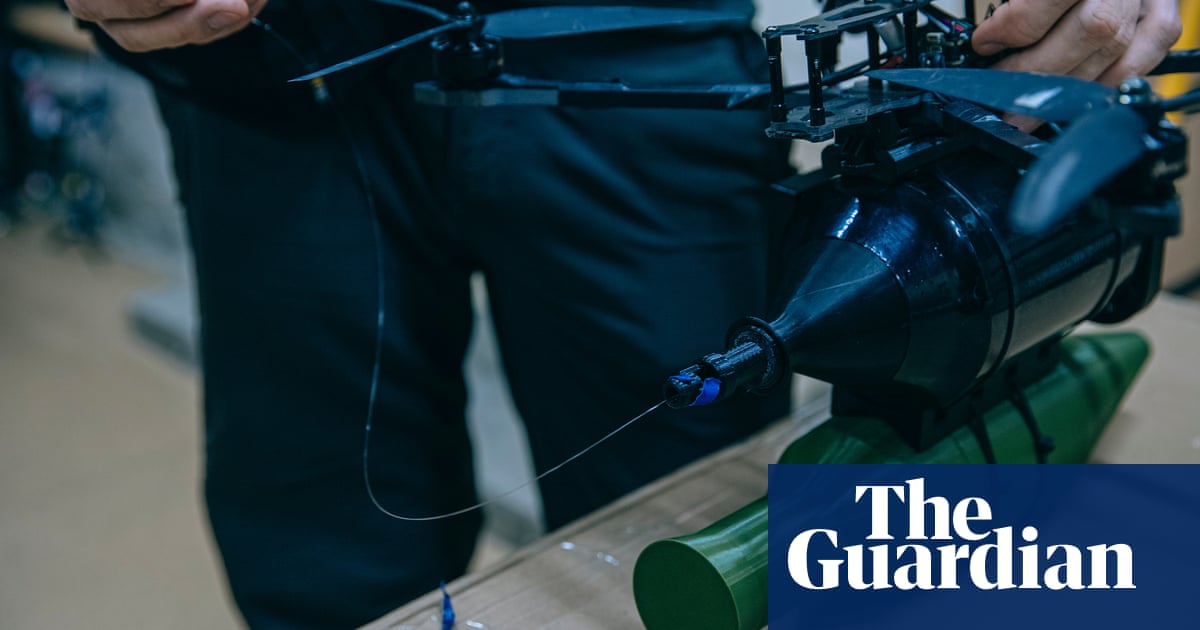At a secret workshop in Ukraine’s north-east, where about 20 people assemble hundreds of FPV (first person view) drones, there is a new design. Under the frame of the familiar quadcopter is a cylinder, the size of a forearm. Coiled up inside is fibre optic cable, 10km (6 miles) or even 20km long, to create a wired kamikaze drone.
Capt Yuriy Fedorenko, the commander of a specialist drone unit, the Achilles regiment, says fibre optic drones were an experimental response to battlefield jamming and rapidly took off late last year. With no radio connection, they cannot be jammed, are difficult to detect and able to fly in ways conventional FPV drones cannot.
“If pilots are experienced, they can fly these drones very low and between the trees in a forest or tree line. If you are flying with a regular drone, the trees block the signal unless you have a re-transmitter close,” he observes. Where tree lined supply roads were thought safer, fibre optic drones have been able to get through.



Today’s wires aren’t actually wires, they are optical fibers. It must be G.652 or G.657 from telecom use, since that’s commercially available en masse. I think most likely would be G.657.A2 because that can be bent tighter. Here’s an example data sheet from a random google search. I wrote it in a different comment already, but the core has 9 micrometer, the cladding 125 micrometer and the coating 250 micrometer diameter. For telecom applications you’d add at least a mantle, or more likely use a cable with many fibers in little pastic tubes wrapped around a metal core for stability, 12 x 12 is fairly standard. Here of course it’s just a single fiber without mantle being spooled off.